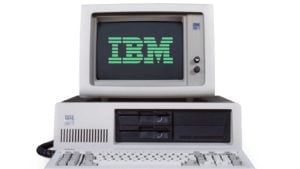IBM (NYSE:IBM) reported earnings at the end of October. The quarterly results gave investors some cause for cheer, but also various reasons for continued concern over the future of IBM stock.
As a result, IBM gave back some of its recent momentum and fell once again below the $140 mark.
Regardless, shares are still up quite a bit on the year, and it’s early in the integration process for Red Hat. Should investors give up on IBM? Or is it worth giving management more time for the turnaround to play out?
A Mixed Earnings Report
IBM’s Q3 results had something for everyone. The most positive, of course, was that IBM beat on EPS figures by a decent degree. And the cloud division posted solid (and accelerating) revenue gains. Cloud revenues overall rose 11% and revenues from Red Hat specific products surged 19%.
There was plenty to disappoint investors and analysts in the earnings report as well, though. For one thing, revenues missed to a significant degree, with all the individual divisions either just matching expectations or falling short of the mark.
Global Technology Services missed by $80 million for the quarter; while it’s no secret that GTS has been shrinking, that’s still a disappointment. Even cloud and cognition revenues, while rising nicely, didn’t increase quite as much as analysts had hoped for.
As a result, people have started saying that IBM stock is now a 2020 story. The business stabilization we saw in 2018 doesn’t appear to have served as a springboard to a true turnaround just yet. And the Red Hat integration will take some time to play out.
Cloud Pivot and IBM’s Fortunes
A big complaint with IBM stock has been growth, or rather the lack thereof. The reaction to the Q3 earnings report further emphasizes that point.
For a period of six years earlier this decade, IBM suffered almost continuous declines in revenue, quarter after quarter. In 2018, IBM managed to stop the revenue decline for a time, but it’s hardly been a triumphant return to the company’s glory days as of yet.
Thus, to shake things up, IBM made a huge move, paying $34 billion to bring Red Hat on board. The two companies combined to create one of the world’s leading hybrid cloud providers. Red Hat already offered a lot of sophisticated solutions.
Now, they can plug that into IBM’s unparalleled global distribution channels. While IBM is clearly not the leader in the cloud space at the moment, it could be a dominant force among companies that need to mix and match their cloud presence across multiple providers and which integrate cloud applications with on-premise computing, particularly for high-security operations.
The merger just closed officially in July, so it’s quite early for judging how well things are going. Judging by IBM’s stock price performance, however, investors are reasonably happy. Shares are up 20% year-to-date, and have rebounded 28% from their 52-week lows last winter.
Too Little Too Late?
Morningstar’s Julie Sharma didn’t have the same sense of optimism following IBM’s report, however. She slashed her price targe from $158 all the way down to $128 following the Q3 results. After a long period of relative optimism on IBM stock, Morningstar’s analyst conceded that IBM has simply shown an “inability to drastically turn the tides”.
As a result, Sharma wrote, the company’s business is increasingly being disrupted by cloud providers that are eating into IBM’s broad business appeal. In certain areas, such as artificial intelligence and blockchain, IBM maintains a clear leadership role.
However, Sharma argues that IBM is losing its main former competitive edge: switching costs. In the past, it was difficult for businesses, particularly less technologically-savvy ones, to change IT providers. You never got fired for picking IBM as your technology partner, as the adage went.
Nowadays, however, tech is moving faster and fewer customers are loyal to one company for all their needs. This has hit IBM; it still dominates in certain areas, but it’s having to compete for a lot of business that it used to win on reputation alone. The Red Hat merger alone isn’t likely to reverse this trend.
IBM Stock Verdict
Sharma summed up the state of the IBM stock debate in her Q3 commentary. Yes, the old business is dropping off and cloud isn’t ready to take the baton just yet, but how fast does the transition need to happen?
Discussing how things are changing, she suggested that IBM’s legacy business still has a lot of cash flow and profits ahead of it, and that analysts are overly worried about its decline:
[I]n our opinion, this deterioration will be a slow one, as we think IBM’s customer base just so happens to be extremely slow to change given their breadth and highly regulated industries.
This slow deterioration should give IBM time to work out its transition to the cloud. That’s the theory anyway. And remember that International Business Machines stock was left for dead in the 1990s when the company lost the personal computing battle to Microsoft (NASDAQ:MSFT).
IBM even had to slash its dividend during that dark time. But they brought in Lou Gerstner who managed to right the ship and reorient IBM toward much more fruitful lines of business in consulting and services.
For IBM stock to be a winning long-term investment, this second pivot, this time to the cloud, needs to work. Early results haven’t been overwhelming, but it’s much too early to give up on the potential just yet, particularly with the Red Hat deal closing just recently.
At the time of this writing, Ian Bezek owned IBM stock. You can reach him on Twitter at @irbezek.

